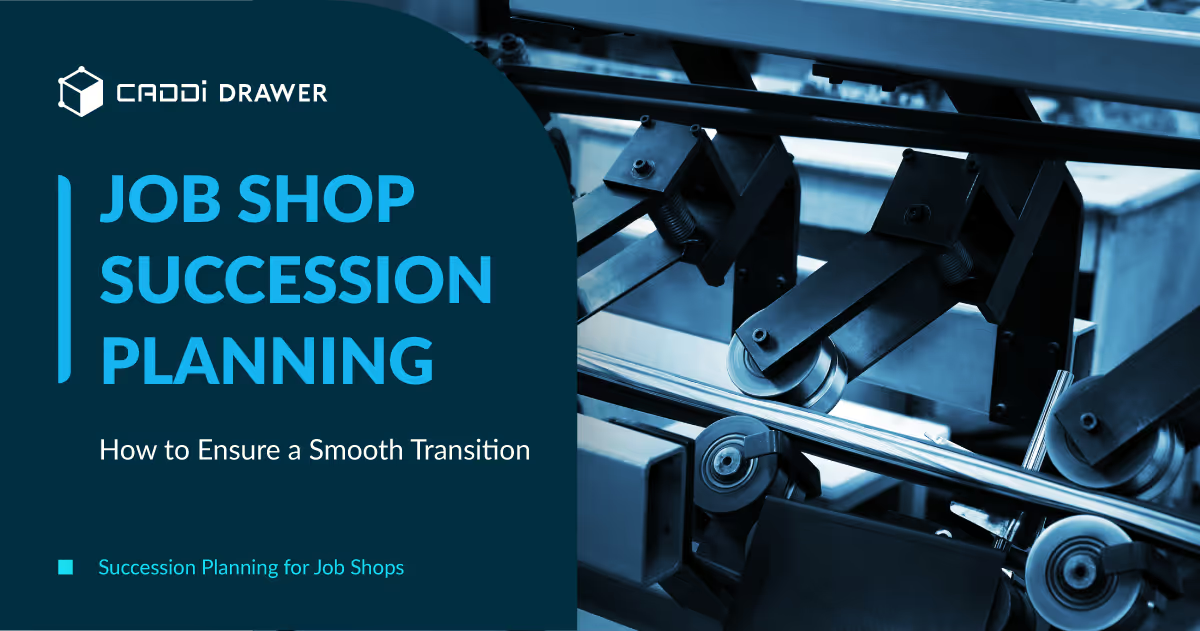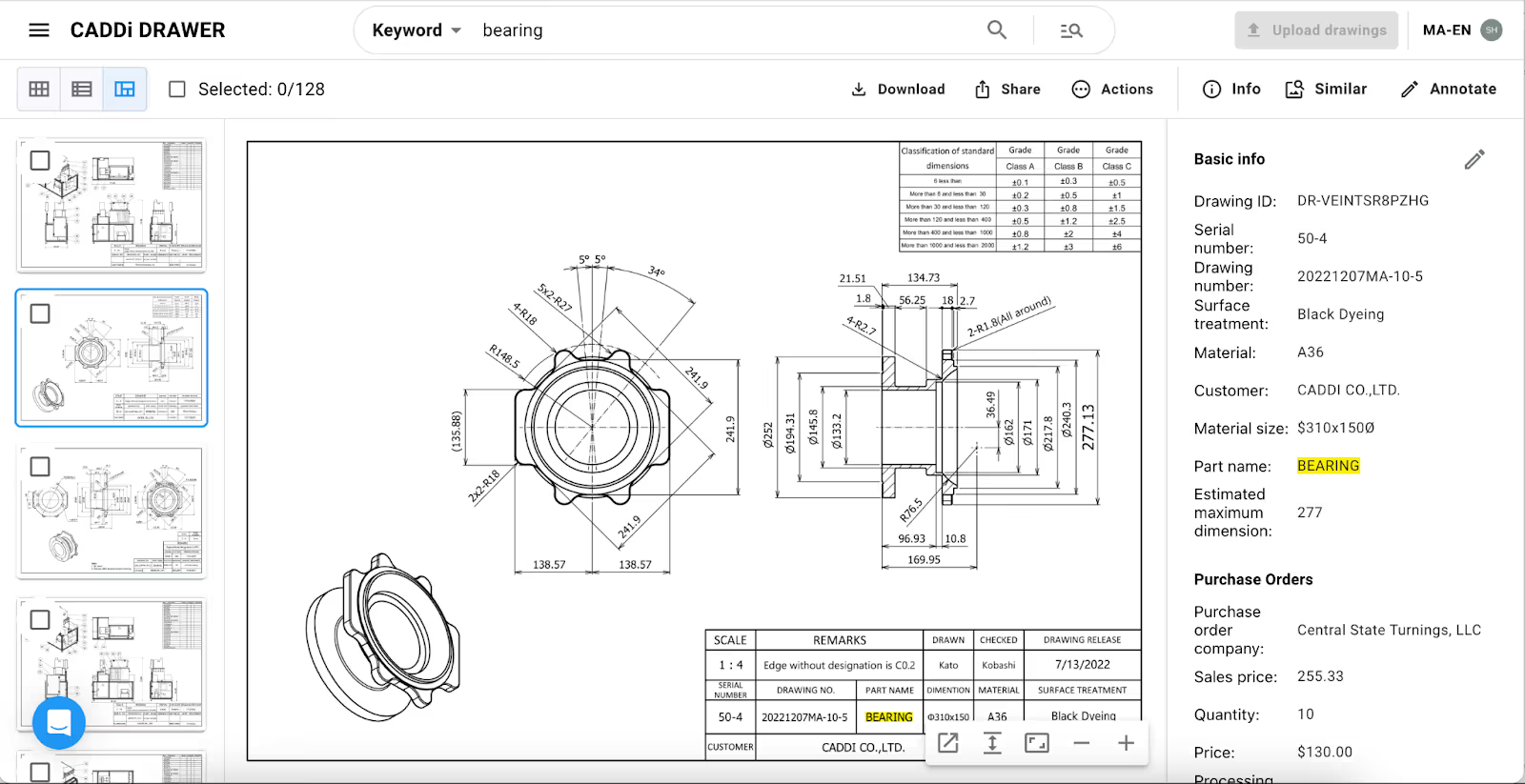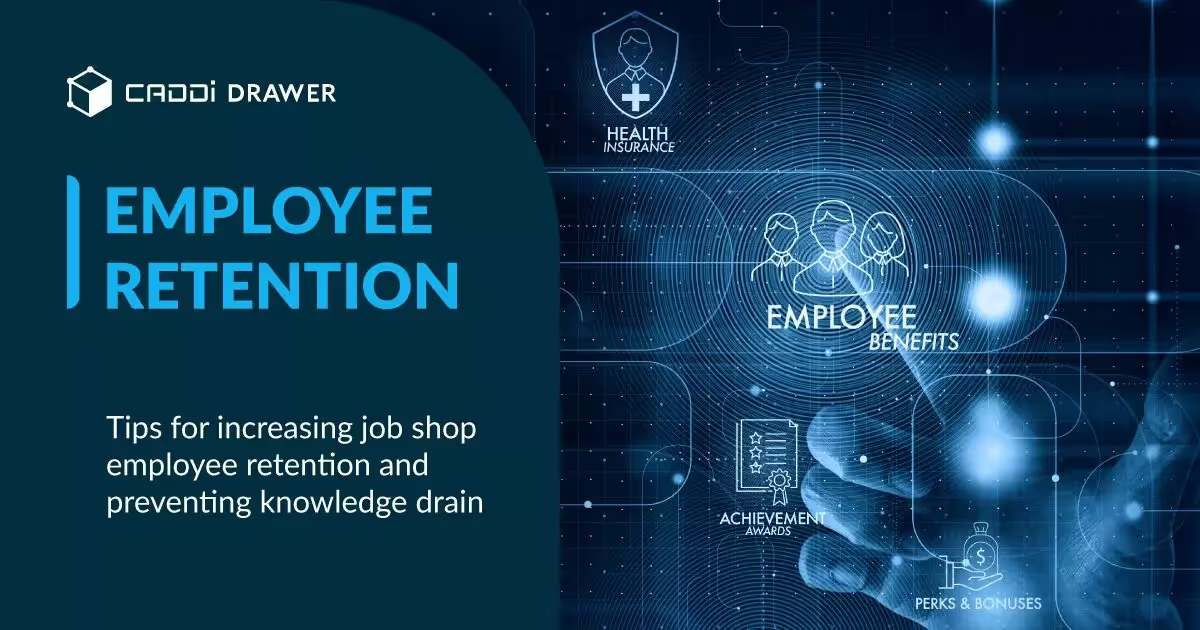Succession Planning for Job Shops: How to Ensure a Smooth Transition

Table of Contents

Why Succession Planning is Crucial
Succession planning is crucial for small businesses like job shops, which rely heavily on the owner’s skills and relationships. A job shop handles customized, low-volume work requiring specialized skills and equipment. Succession planning ensures a smooth leadership transition and business continuity when the owner departs, retires, or passes away.
Many job shop owners fail to plan for succession, leading to major consequences. Without a clear plan, there may be no qualified successor ready to take over, resulting in leadership gaps that damage employee morale, productivity, and retention. This lack of planning can also make it difficult to find buyers interested in acquiring the business, putting it at risk of shutting down. Effective succession planning mitigates these risks by grooming new leadership talent internally and establishing procedures for ownership transfer, providing a roadmap for the company’s continued success.
When to Start Planning
The ideal time to start succession planning is 5-10 years before the current owner plans to retire or step away from day-to-day operations. This allows sufficient time to thoughtfully develop and implement the transition.
The general timeline for job shop succession planning includes:
- 5-10 Years Out: Begin having initial conversations and planning. Identify and start grooming potential successors.
- 3-5 Years Out: Solidify the succession plan and timeline. Begin training successors and transitioning responsibilities.
- 1-2 Years Out: Finalize legal and financial details. Communicate the plan to employees and customers.
- 6 Months-1 Year Out: New leadership takes over day-to-day operations. Original owner plays advisory role.
- Retirement Date: Original owner steps away entirely and enjoys retirement!
Proper succession planning takes time. By starting early, job shop owners can thoughtfully choose and prepare the next generation of leadership while ensuring a smooth transfer of power, knowledge, and relationships. This helps set up the company for continued success.
Determining Future Leadership
One of the most important parts of succession planning for job shops is deciding who will take over leadership roles when current owners and managers depart or retire. There are several common options to consider.
Passing Leadership to Family Members
Pros: Keeping leadership within the family can provide continuity, preserve legacy and values, and simplify ownership transition. Children may be groomed from an early age and family loyalty can help ensure commitment to the business.
Cons: Family members may not have the necessary skills, experience, or interest to take over leadership roles. Nepotism and entitlement issues can arise. Family conflicts and rivalries may disrupt the transition.
Promoting Employees to Leadership Roles
Pros: Loyal, experienced employees already familiar with the company’s operations and values are a natural choice for promotion. This builds trust and morale.
Cons: Employees might not possess the broad vision or leadership capabilities needed at the executive level. Lacking experience outside the company, internal hires may simply continue status quo.
Recruiting New Leaders from Outside
Pros: External hires bring fresh ideas, specialized expertise, and wider industry perspective. An objective outsider can make needed changes existing employees might resist.
Cons: Outsiders take time getting up to speed and lack existing internal relationships. Cultural fit may be difficult and staff may resent loss of promotion opportunities.
Selling/Merging the Company
Pros: Selling the job shop or merging with a larger company provides instant liquidity and an exit strategy. New ownership can inject capital, expand marketing and operations.
Cons: Loss of company identity, culture and autonomy. Current owners lose control over future direction. Employees may face job uncertainty.
Thorough evaluation of options and open communication will lead to the best leadership succession plan.
In the following section,s we will discuss cases where leadership roles are passed on to family members or existing employees.
Training and Transition
A well-defined training and transition plan is crucial for ensuring the successor is fully prepared to take over the business. This involves:
- Determining the successor’s current skills and knowledge gaps. Assess their current abilities in areas like leadership, operations, finance, sales, and industry knowledge. Identify weak spots that need to be addressed.
- Creating a formal training plan. Outline the specific skills and knowledge to be learned, methods of training, and timeline. Training may involve job shadowing, formal education, mentoring, attending conferences, or rotation through different roles. Define measurable goals.
- Providing ongoing coaching and feedback. Once training begins, the current owner should provide regular coaching sessions and constructive feedback on the successor’s progress. Be patient – it takes time to develop new skills.
- Allowing the successor to make decisions. Let the successor take on more responsibility and make minor decisions well before the transition takes place. This builds confidence and gets them comfortable with leadership.
- Defining new roles and responsibilities. As training advances, begin shifting responsibilities from the current owner to the successor. Clear definitions of roles and duties are needed to avoid confusion and redundancy.
- Having an integration period. Plan for a 6-12 month integration phase where the current owner still owns the business but takes a consulting role. This allows the successor get up to speed while the owner provides back-up.
- Capturing and transferring the owner’s knowledge. One critical step is for the current owner to convert their tacit knowledge and experience into an accessible format. This could involve documentation, video recordings, knowledge databases, or other technological solutions. Preserving these valuable insights ensures they can be passed on effectively to the successor.
With careful planning, mentorship, and knowledge transfer through both traditional and technological means, the successor can fully prepare for their new leadership role in the business. Defining the training plan, responsibilities, and capturing the owner’s expertise in various formats leads to a smoother transition.
Communicating the Plan
A succession plan is only effective if it is properly communicated. Business owners should think carefully about when and how to announce the plan to employees, customers and vendors.
- When to Announce: Announcing too far in advance can create unnecessary uncertainty and distraction. Ideally, key succession events should only be announced 1-2 months in advance. For a major leadership transition, a more extended runway of 6 months may be prudent.
- Employees: Employees will want to know how the transition will impact their roles and responsibilities. Be ready to address concerns about job security and leadership changes. Convey the message that operations will continue undisrupted.
- Customers:. Long-standing customers should be told in advance if a new leader will be their main point of contact. Assure them that service levels will be maintained.
- Vendors/Suppliers: Alert key vendors and suppliers of upcoming leadership changes. Provide continuity by keeping existing contacts informed during the transition period.
- Manage Uncertainty: A succession plan reduces uncertainty, but employees may still worry about the future. Communicate the plan clearly and listen to concerns. Maintain morale with transparency and reassurance.
The succession process may feel unsettling initially. With proactive communication and a thoughtful transition plan, a small business can preserve continuity even with major leadership changes on the horizon.
Implementing the Transition
A well-executed leadership transition is vital for ensuring ongoing success. This process should be carefully planned and rolled out in phases to minimize disruption.
- Phase 1: Shadowing – New leaders should shadow current leaders for a period of time to learn processes, build relationships, and gain practical experience. This allows for a smooth knowledge transfer.
- Phase 2: Joint Leadership – Current and future leaders work together to jointly run operations during this period. This allows new leaders to get comfortable with decision-making while current leaders are available to advise and assist.
- Phase 3: Handoff – Current leaders gradually transfer leadership, decision-making authority, and ownership fully to the new leaders during this stage. Current leaders remain available during the transition to consult and provide guidance as needed.
- Phase 4: New Leadership – New leaders fully take over operations independently while former leaders move into advisory roles. New structures, strategies and processes can be implemented at this stage.
Careful preparation and gradually phasing in new leadership helps minimize business disruptions, retain organizational knowledge, and set the company up for ongoing prosperity under the next generation.
How CADDi Drawer can help knowledge transfer
Effective knowledge transfer is essential for ensuring the continued success of a job shop under new leadership. CADDi Drawer, a powerful software solution, can play a crucial role in preserving and passing on valuable insights and experiences.
One key feature of CADDi Drawer is its ability to link past estimates, detailed manufacturing data, and other relevant information directly to CAD drawings. This allows the wealth of knowledge accumulated over years of operation to be captured and stored in a structured, easily accessible format.

Moreover, CADDi Drawer offers robust search capabilities, including keyword search and similar drawing search functions. These tools enable employees and new leaders to quickly locate and leverage relevant knowledge from the past. Whether it’s finding a similar past project to reference for a new estimate or studying the manufacturing details of a complex part, CADDi Drawer puts that valuable information at their fingertips.

By deploying CADDi Drawer as part of the succession planning process, job shops can ensure that the critical knowledge and expertise of outgoing owners and leaders is preserved and remains available to guide the company into the future. It’s a powerful way to smoothen the transition and set the next generation of leadership up for success.
For example, Hilltop, a machine shop, is actively utilizing CADDi Drawer to tackle digital transformation and knowledge transfer.
Accelerating Company-Wide Digital Transformation with CADDi Drawer
Why Succession Planning is Crucial
Succession planning is crucial for small businesses like job shops, which rely heavily on the owner’s skills and relationships. A job shop handles customized, low-volume work requiring specialized skills and equipment. Succession planning ensures a smooth leadership transition and business continuity when the owner departs, retires, or passes away.
Many job shop owners fail to plan for succession, leading to major consequences. Without a clear plan, there may be no qualified successor ready to take over, resulting in leadership gaps that damage employee morale, productivity, and retention. This lack of planning can also make it difficult to find buyers interested in acquiring the business, putting it at risk of shutting down. Effective succession planning mitigates these risks by grooming new leadership talent internally and establishing procedures for ownership transfer, providing a roadmap for the company’s continued success.
When to Start Planning
The ideal time to start succession planning is 5-10 years before the current owner plans to retire or step away from day-to-day operations. This allows sufficient time to thoughtfully develop and implement the transition.
The general timeline for job shop succession planning includes:
- 5-10 Years Out: Begin having initial conversations and planning. Identify and start grooming potential successors.
- 3-5 Years Out: Solidify the succession plan and timeline. Begin training successors and transitioning responsibilities.
- 1-2 Years Out: Finalize legal and financial details. Communicate the plan to employees and customers.
- 6 Months-1 Year Out: New leadership takes over day-to-day operations. Original owner plays advisory role.
- Retirement Date: Original owner steps away entirely and enjoys retirement!
Proper succession planning takes time. By starting early, job shop owners can thoughtfully choose and prepare the next generation of leadership while ensuring a smooth transfer of power, knowledge, and relationships. This helps set up the company for continued success.
Determining Future Leadership
One of the most important parts of succession planning for job shops is deciding who will take over leadership roles when current owners and managers depart or retire. There are several common options to consider.
Passing Leadership to Family Members
Pros: Keeping leadership within the family can provide continuity, preserve legacy and values, and simplify ownership transition. Children may be groomed from an early age and family loyalty can help ensure commitment to the business.
Cons: Family members may not have the necessary skills, experience, or interest to take over leadership roles. Nepotism and entitlement issues can arise. Family conflicts and rivalries may disrupt the transition.
Promoting Employees to Leadership Roles
Pros: Loyal, experienced employees already familiar with the company’s operations and values are a natural choice for promotion. This builds trust and morale.
Cons: Employees might not possess the broad vision or leadership capabilities needed at the executive level. Lacking experience outside the company, internal hires may simply continue status quo.
Recruiting New Leaders from Outside
Pros: External hires bring fresh ideas, specialized expertise, and wider industry perspective. An objective outsider can make needed changes existing employees might resist.
Cons: Outsiders take time getting up to speed and lack existing internal relationships. Cultural fit may be difficult and staff may resent loss of promotion opportunities.
Selling/Merging the Company
Pros: Selling the job shop or merging with a larger company provides instant liquidity and an exit strategy. New ownership can inject capital, expand marketing and operations.
Cons: Loss of company identity, culture and autonomy. Current owners lose control over future direction. Employees may face job uncertainty.
Thorough evaluation of options and open communication will lead to the best leadership succession plan.
In the following section,s we will discuss cases where leadership roles are passed on to family members or existing employees.
Training and Transition
A well-defined training and transition plan is crucial for ensuring the successor is fully prepared to take over the business. This involves:
- Determining the successor’s current skills and knowledge gaps. Assess their current abilities in areas like leadership, operations, finance, sales, and industry knowledge. Identify weak spots that need to be addressed.
- Creating a formal training plan. Outline the specific skills and knowledge to be learned, methods of training, and timeline. Training may involve job shadowing, formal education, mentoring, attending conferences, or rotation through different roles. Define measurable goals.
- Providing ongoing coaching and feedback. Once training begins, the current owner should provide regular coaching sessions and constructive feedback on the successor’s progress. Be patient – it takes time to develop new skills.
- Allowing the successor to make decisions. Let the successor take on more responsibility and make minor decisions well before the transition takes place. This builds confidence and gets them comfortable with leadership.
- Defining new roles and responsibilities. As training advances, begin shifting responsibilities from the current owner to the successor. Clear definitions of roles and duties are needed to avoid confusion and redundancy.
- Having an integration period. Plan for a 6-12 month integration phase where the current owner still owns the business but takes a consulting role. This allows the successor get up to speed while the owner provides back-up.
- Capturing and transferring the owner’s knowledge. One critical step is for the current owner to convert their tacit knowledge and experience into an accessible format. This could involve documentation, video recordings, knowledge databases, or other technological solutions. Preserving these valuable insights ensures they can be passed on effectively to the successor.
With careful planning, mentorship, and knowledge transfer through both traditional and technological means, the successor can fully prepare for their new leadership role in the business. Defining the training plan, responsibilities, and capturing the owner’s expertise in various formats leads to a smoother transition.
Communicating the Plan
A succession plan is only effective if it is properly communicated. Business owners should think carefully about when and how to announce the plan to employees, customers and vendors.
- When to Announce: Announcing too far in advance can create unnecessary uncertainty and distraction. Ideally, key succession events should only be announced 1-2 months in advance. For a major leadership transition, a more extended runway of 6 months may be prudent.
- Employees: Employees will want to know how the transition will impact their roles and responsibilities. Be ready to address concerns about job security and leadership changes. Convey the message that operations will continue undisrupted.
- Customers:. Long-standing customers should be told in advance if a new leader will be their main point of contact. Assure them that service levels will be maintained.
- Vendors/Suppliers: Alert key vendors and suppliers of upcoming leadership changes. Provide continuity by keeping existing contacts informed during the transition period.
- Manage Uncertainty: A succession plan reduces uncertainty, but employees may still worry about the future. Communicate the plan clearly and listen to concerns. Maintain morale with transparency and reassurance.
The succession process may feel unsettling initially. With proactive communication and a thoughtful transition plan, a small business can preserve continuity even with major leadership changes on the horizon.
Implementing the Transition
A well-executed leadership transition is vital for ensuring ongoing success. This process should be carefully planned and rolled out in phases to minimize disruption.
- Phase 1: Shadowing – New leaders should shadow current leaders for a period of time to learn processes, build relationships, and gain practical experience. This allows for a smooth knowledge transfer.
- Phase 2: Joint Leadership – Current and future leaders work together to jointly run operations during this period. This allows new leaders to get comfortable with decision-making while current leaders are available to advise and assist.
- Phase 3: Handoff – Current leaders gradually transfer leadership, decision-making authority, and ownership fully to the new leaders during this stage. Current leaders remain available during the transition to consult and provide guidance as needed.
- Phase 4: New Leadership – New leaders fully take over operations independently while former leaders move into advisory roles. New structures, strategies and processes can be implemented at this stage.
Careful preparation and gradually phasing in new leadership helps minimize business disruptions, retain organizational knowledge, and set the company up for ongoing prosperity under the next generation.
How CADDi Drawer can help knowledge transfer
Effective knowledge transfer is essential for ensuring the continued success of a job shop under new leadership. CADDi Drawer, a powerful software solution, can play a crucial role in preserving and passing on valuable insights and experiences.
One key feature of CADDi Drawer is its ability to link past estimates, detailed manufacturing data, and other relevant information directly to CAD drawings. This allows the wealth of knowledge accumulated over years of operation to be captured and stored in a structured, easily accessible format.

Moreover, CADDi Drawer offers robust search capabilities, including keyword search and similar drawing search functions. These tools enable employees and new leaders to quickly locate and leverage relevant knowledge from the past. Whether it’s finding a similar past project to reference for a new estimate or studying the manufacturing details of a complex part, CADDi Drawer puts that valuable information at their fingertips.

By deploying CADDi Drawer as part of the succession planning process, job shops can ensure that the critical knowledge and expertise of outgoing owners and leaders is preserved and remains available to guide the company into the future. It’s a powerful way to smoothen the transition and set the next generation of leadership up for success.
For example, Hilltop, a machine shop, is actively utilizing CADDi Drawer to tackle digital transformation and knowledge transfer.
Accelerating Company-Wide Digital Transformation with CADDi Drawer
Ready to see CADDi Drawer in action? Get a personalized demo.
Subscribe to our Blog!
Related Resources












.svg)



.svg)
.svg)
.svg)


